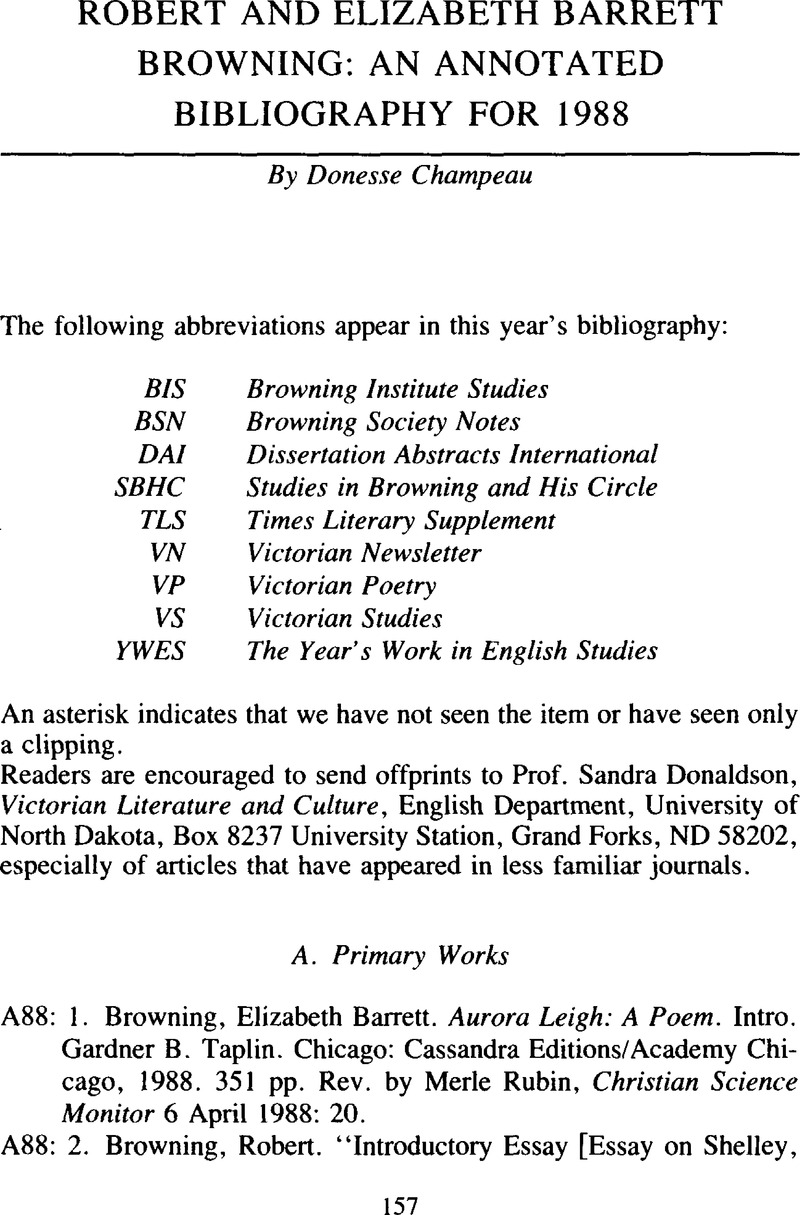C88: 18.Edmond, Rod. “‘A printing woman who has lost her place’: Elizabeth Barrett Browning's
Aurora Leigh.”
Affairs of the Hearth: Victorian Narrative Poetry and the Ideology of the Domestic.
New York:
Routledge,
1988.
130–
169. @Uses Foucault's theory of the “discourse of sexuality,” and contemporary sources: book reviews, periodical articles. EBB was “intensely conscious of herself as a woman writer, [which] impelled her search for new forms” in
Aurora Leigh (133).
Aurora Leigh's “status as a Victorian classic” accounts for its “disappearance in the early years of this century” (166). Current critical attention has in effect rewritten the poem's text, thus leading to its present republication.
Google Scholar 